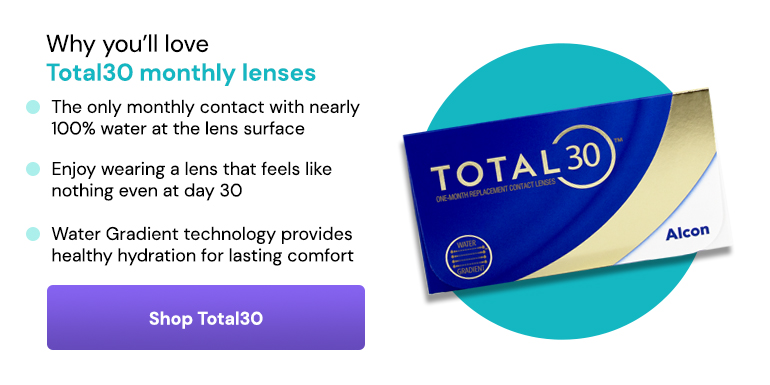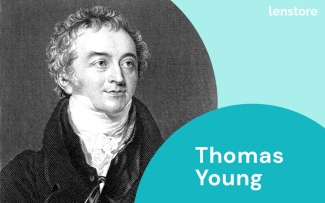Notable figure in eye care – Thomas Young
Thomas Young – (1773 - 1829)
Born in Somerset, England, in 1773, Thomas Young was a British scientist, physician, and polymath whose extensive range of studies covered everything from eye anatomy to Egyptology. By age 14, Young had learned over ten languages, including Greek, Latin, Arabic, and French. Young became interested in biology and anatomy, leading him to study medicine at St. Bartholomew’s Hospital in London in 1792. He continued those studies at the University of Edinburgh, Scotland, and the University of Göttingen in Germany, where in 1796, he received a Doctor of Medicine degree.
In 1799, Thomas Young returned to London to set up his medical practice. However, Young was often distracted by his other scientific pursuits, and while being a talented physician, he excelled at lecturing and experimentation. His revolutionary advancements in the study of light waves compared him in scientific circles to Isaac Newton. In 1801, he was appointed professor at the Royal Institution and delivered over 90 lectures before resigning to return to his medical practice. Many of his lectures were published several years later and are still used in course material today.
In 1811, Young was appointed physician to St. George’s Hospital but continued researching topics outside the medical field, like literature and ancient languages. Young was integral in deciphering the Rosetta Stone, and his early notes and framework on hieroglyphics made it possible for his rival Jean-François Champollion’s complete translation in 1822.
Young was regarded highly amongst his friends in academia and his medical colleagues as a person with a passion for learning and a true "Man of Science.”
Young passed away aged 55 at his home in London and was buried inside the family vault in Farnborough, Kent. A tablet in the Chapel of St. Andrew in Westminster Abbey honours Young alongside other notable British scientists like Matthew Baillie and Nobel Prize winner John Strutt, 3rd Baron Rayleigh.

Thomas Young’s contributions to eye care
During his time studying medicine and anatomy, Thomas Young took a deep interest in how the eye senses light and refraction. Young observed that a change in the shape of the crystalline lens was responsible for the eye to see clearly at distances instead of the cornea. Considered the pioneer of physiological optics, Thomas Young’s other findings and research about vision include:
- Credited as the first person to thoroughly describe and define astigmatism.
- Postulated how cone photoreceptors in the eye observe wavelengths of colour. This later became coined the Young-Helmholtz trichromatic theory – that colour perception relies on three eye receptors sensitive to shades of red, green, or blue.
- Designed his own optometer to accurately determine the eye’s state of focus to better prescribe corrective lens prescriptions.
- Gave lectures to the Royal Society on topics like the “Mechanism of the Eye,” “On the Theory of Light and Colour,” and “Observations on Vision,” which detailed his findings on eye anatomy and how refraction and accommodation affect eyesight.
Other notable achievements of Thomas Young
As a polymath, one with a vast knowledge of many subjects, Thomas Young’s achievements extended beyond his primary profession as a physician. Young was highly interested in languages and light. Here are a few of his notable achievements in those fields:
- He was elected to the Royal Society at age 21 and became the society’s foreign secretary. A post he held until his death in 1829
- Young proposed the wave theory of light in opposition to Isaac Newton’s particle theory of light.
- Developed a measure, now called “Young’s modulus,” which helps measure the elasticity of materials.
- He coined the term Indo-European to refer to the major European language groups. Young also divided the world languages into five major families: Monosyllabic, Indo-European, Tataric, African, and American.
- As an Egyptologist, Young made important advancements in deciphering hieroglyphics, which later contributed to the translation of the Rosetta Stone.
- Was an early contributor to Encyclopaedia Britannica. Young wrote biographies and articles on music, language, and science.
- Young’s equation was named after him, which describes the relationship between a liquid when it comes in contact with a solid surface and the energy created.
- Elected Foreign Honorary Member of the American Academy of Arts and Sciences in 1822.
Final word
Young’s theories provided a starting point for future research and advancements by other optical visionaries. His contemporary, Sir John Herschel, who proposed some of the first contact lens designs, called Young a “truly original genius.”
While Thomas Young didn’t invent any physical eye care aids, his groundbreaking work on how the eye perceives colour and being the first person to describe and propose treatments to correct astigmatism will remain his legacy in optometry.



